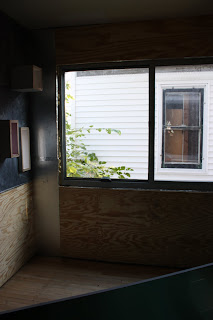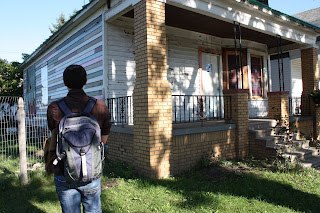From Presentations:
· Keep it simple – If the project idea is simple and we leave ample time. During stressful times people revert to their strengths and we should try to avoid this! People trying new stuff means sometimes they make new things or do it in a different and interesting way.
· Add to the worth with the $2,000: which would you prefer? $2,000 or our project?
· Were we specific enough as a group? Could we be more so?
“It’s about how this fits in the real world.” –Max
Eugene Schtyen
Reverse Brainstorming – Innovation vs. Invention
Between 2:00-3:00 is sleepy time! =P
· We have a project, not an organization, so we have timelines and deliverables.
· Rule of Cheese and Bacon – The cow gave the cheese, the pig gave it’s life. Somebody is going to take the brunt of things.
· http://innovationprinciples.blogspot.com
· 3,000 raw ideas = 1 successful product
· Stage of NPD Process
· It takes persistence. It’s all about making our mistakes better than others mistakes.
· Technology has become a winner takes all market
· We need to learn while doing. I need to force myself to try new things.
· The question, “how do we think outside the box?” is not the first question. The first question is, “What is the box?”
· We need to unlearn what is untrue
· There are hard barriers and soft barriers. An example of a hard barrier is our $2,000 budget. Soft barriers exist in the mind; it is what I think is possible.
Video 1:
It is an invention to speed up feeding at lunch (in a forced way) to increase efficiency. “It’s no good – it isn’t practical.” The thing that didn’t work was the electric motor. It is technology we take for granted.
Video 2:
Break throughs DO happen.
· There is no theory of creativity. We don’t know how it happens.
· Genius is not something that sits inside you: it’s based on what you do. It’s after the fact that it gets recognized.
· Copying IS something we use. For each of the examples shown there is an example of someone who didn’t. We want to practice and get the skill.
· The key word on the patents is IMPROVEMENT. It was always there during that time period.
· There is nothing creative about trying 6,000 different things. Edison’s biggest constraint was big wires and cost. It’s the rest of the system that’s creative. The lightbulb wasn’t the breakthrough; the parallel was the breakthrough. It all depends on the viewpoint. WE DON’T SEE THE BIG BREAKTHROUGHS.
· The video plays on our stereotype that there is a puzzle. IT’S NOT A SIMPLE COMBINATION. Looking back is way easier than looking forward. Everything is obvious in hindsight.
· In 1935 it was still a joke about how electric motors didn’t work.
· Ford put together crazy ideas. It was brilliant. I took this, that, and the other thing, never tried on this scale, and put them all together.
· The movie doesn’t show the inventive effort.
Conventional Wisdoms – SOFT BARRIERS
1. “Everything is a trade off.”
2. “Solving problems is just like solving puzzles.”
3. “Invention is the same as innovation.”
4. “Creativity is a trait, not a skill that can be taught. You either have it, or you don’t.”
#1
Quality vs. Price
Risk vs. Reward
Accuracy vs. Speed
PROBLEMS:
Breakthroughs happen when we break trade offs.
Examples:
Edison – Before: bright lights = high cost and high current
GM – Before: better car = higher $ and more people
B&N – (Before Amazon Solution) Before: more choice = higher store cost
Yahoo – (Before Google) Before: more $ = more annoyance
FIND A WAY TO ELIMINATE A TRADE OFF
Potential green energy?
Raise you hand as high as possible….
#2
Jigsaw puzzles in 1766 (British Empire) were toys for high middle class, so that kids could teach themselves.
Has a pre-defined answer
Considered solved when the answer is found
Doesn’t create any risk
Idea for artificial environments
PROBLEMS:
May or may not have a solution (open-ended)
When solution is found it doesn’t necessarily mean it will succeed in implementation or in the marketplace
Carries investment risks and has unintended consequence
Examples:
San Francisco’s low flow toilet. Junk/crap gets stuck and starts stinking. Caring people did more damage than good.
ATF Fast & Furious. Arms ended up in Mexico. Not a controlled experiment like they thought.
SOLUTIONS CREATE PROBLEMS: JUST THE FIRST STEP IN THE PROCESS
You don’t just throw stuff together and it works
Creative thinking: approach problems as obstacles. Remove the obstacle to open up new opportunities.
#3
Invention & Innovation: Different words for the same thing?
Portrayed as old vs. new
It starts in the head. Then it has to get made. Then people have to use it.
Lots of ups and downs: it’s a process.
Invention is a personal or small group event.
Innovation is a network of social events
Society rewards innovation…not invention.
Chair vs. Stool: we take technology for granted.
The way you phrase problems is important!
#4
Genius = Guardian deity who watches over
Talent = Balance, weight. Who can lift the most?
Creativity = 1670’s quality of creating. “out of nothing.”
Richard E. Nisbett Quote
Mihaly Csikscentmihalyi chart
Rewarding students for hard work over cleverness yields better results.
PROBLEM SELECTION IS AN ESSENTIAL PART OF INNOVATION PROCESS
Recognize a good problem.
From an innovators perspective, most problems are not worth solving. We HAVE to be innovators.
Idea FIRST, THEN throw stuff together.
Examples:
Lycra material science. Then obesity hit and it didn’t make people look good. Amanda Kennedy.
Yahoo vs. Google. Yahoo paid Google 7.1 Million to do search engine work for them. Yahoo tries to get people as many pages as possible. Google shows relevancy: what people want to see, not what they want to show.
STEP #1 FOR PROBLEM SOLVING: Find high value problem
FIND>ANALYZE>SOLVE>ENABLE>
Brainstorm was invented by Alex Osborn in 1930’s. It became popular in 60’s.
1. Defer judgement
2. Quantity beats quality
go Go GO!
Criticism ruled out
Free wheeling
Quantity
Combination & improvements are sought
FORGOTTEN RULES
Designed to solve simple problems that don’t require value judgement
A supplement not a solution
Use as an ore
KEY FINDINGS SINCE
Illusion of Group Productivity (small groups)
Social Facilitation (mere presence)
Better for simple tasks, worse performance on complex tasks
Group Polarization (group think)
Risky or cautious shift
Social Loafing – More people to pull rope, less force each one applies
Everyone should have their own task and it should be significant
BRAINSTORM
THE GOOD:
Free exchange of ideas
Good feelings
THE BAD:
Quality of ideas unknown
Don’t know what you missed
Rat hole solutions
THE UGLY:
“counterproductive way of spending time”
REVERSE BRAINSTORMS:
The Goal: Discover Problems
Explore problem space quickly
The more problems the better
Remove psychological inertia
Get rid of problem fear and brain clutter
The Technique
Apply enhanced brainstorming rules
Look for problems, not solutions
Ran out of problems? Seek help from the 3 magicians
List now, refine level
GROUP EXERCISE: (part 1)
No criticism
No solutions
No fear
No rat-holing
Build upon ideas of others
Keep moving
No more than 2 hours
PROBLEM EVALUATION: (part 2)
Define short-term & long-term time frames
Consider key restraints that define the time frames
Imagine that I have $10,000 earmarked for short-term investment
Imagine that each line on the Problem List represents a company that developed the best solution
Invest no more than $1,000 each in companies that in your opinion will provide the best short-term return
Make sure total at the bottom is = $10,000
Repeat the exercise w/ $10,000 earmarked
TRUE QUESTION: what is worth working on?
Problem Mapping (Timing – Value)
I. Walkthrough the list of problems
II. Discuss & place on the diagram
Good Exercise:
What constraints do I take for granted?
Look for overlaps: can we knock off other problem by solving one?
Categorize later with group (Cluster)
Whatever I’m doing now has merit in the real world
Free consumer survey –Very Important Data
“I want everyone in the world to use this.”
If you tell a good story, you can get people to buy into it.
My top 10 might be useless. Eventually worthwhile stuff emerges.
Don’t get locked into my top 10.
Distinguish between things & problems
Define problems & sometimes solutions begin to stare us down
CREATIVE IS NOT WHAT YOU ARE. IT’S WHAT YOU DO.
Question to provoke problems: What do we not know?
Building extremely good products gets people involved.
Keep in mind: NO DELUSIONS OF GRANDEUR
People work because they are excited to work on an insanely great problem.
What problems are we trying to alleviate?
To be in trouble can be a positive thing.
Good Book: Four Horsemen of Marital Apocalypse
#1 Contempt
#2 Defensiveness (should say, how can we make it better?)
Steve Job in 2001
How he presents his product
1st Question – WHY? Long-term Question/Viewers Question
The more you work on something, the more you talk/think HOW (short-term question)
Spend A LOT of time on presentation
Addresses market! Not speculative. Large market.
Shows current examples
Shows order of magnitude change.
Quantum Leap – Entire music library at all times with you.
It’s not about sleekness. It’s about user. What it does is next.
Problem: cost, size, and amount of music
Breakthroughs!
Ultra-portable – size of a deck of cards
Hierarchy of problems: not just great feature, big solutions.
Offers solutions to EVERY problem
Last thing on list: Apple Design
MAKE THEM BELIEVE THAT IT’S JUST NOT ANOTHER ONE OF SOMETHING.
Several magnitude changes.
QUESTIONS TO ASK OURSELVES:
WHAT IS THE PURPOSE?
WHAT IS THE TRUTH?
WHAT IS THE ACTUAL STATE OF THINGS?
WHAT DO WE OFFER?



























































